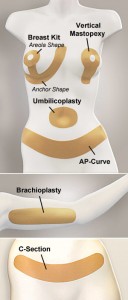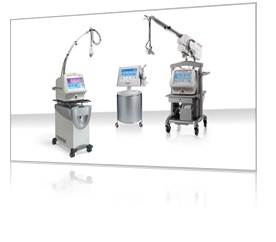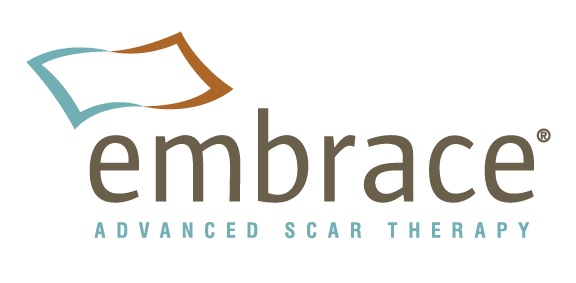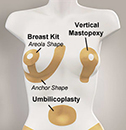A scar is the normal outcome of healing after the skin has been injured. The final appearance of the scar is dependent on the remodeling of collagen fibers that are deposited to enable the wound to heal. The scar will frequently be red and slightly raised during the initial healing phase. When an excessively thick or hypertrophic scar forms, it is raised above the skin surface but stays within the immediate area of the original wound. Keloids are raised and dense scars that spread beyond the borders of the original wound and frequently are resistant to therapeutic intervention. Several techniques are used by Dr. Forley to improve the appearance of scars.
Topical Gel
Silicone gel that is applied topically to scars has been shown to prevent scar thickening and lessen discoloration by creating a favorable environment for scar maturation. The silicone gel is paired with a sunscreen in bioCorneum®+ to protect the scar from the damaging effects of UV exposure.
Silicone Sheeting

Steroid Injections
Steroid injections inhibit fibroblast growth, reducing the amount of collagen deposited into the scar. Side effects include lightening of the skin color, thinning of the skin, and blood vessel overgrowth causing skin discoloration. The use of conservative amounts of steroids is considered a safe and effective treatment modality for scar reduction.
Laser Treatment
Progress in laser technology and refinements in technique have made laser therapy a preferred treatment choice for scars. 
Scar Revision
Surgery is available as an option to improve a scar that has not responded sufficiently to other techniques. The scar is excised, usually under local anesthesia, and the wound is precisely repaired in layers. The key to reducing recurrence of the scar is to reduce tension on the wound closure. The healing process is monitored closely, with use of the measures described above, to enhance the likelihood of a favorable outcome.
Tags: bioCorneum, fraxel, hypertrophic scars, keloids, Plastic Surgery, scars, silicone gel, silicone sheeting
Written by Dr. Forley on January 28, 2013




